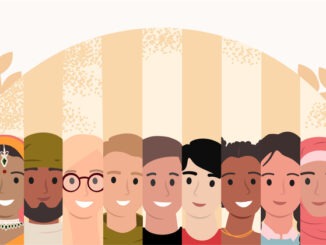
Taking the world by storm, ChatGPT is the AI phenomenon that everyone is talking about – but did you know it could also be used to improve workplace DEI?
CREDIT: This is an edited version of an article that originally appeared on Forbes
Many industries have already been impacted since ChatGPT’s inception, with likely many more to follow. In January, The Washington Post reported that ChatGPT could possibly replace hundreds of millions of jobs. Industries that may be impacted by this newest iteration of technology include jobs that involve simple tasks that require repetition, such as customer service roles, telemarketing, copywriting and recruiting.
One field that has seen a big boom in the last few years is diversity, equity, and inclusion (DEI). And while it is unlikely that ChatGPT and other generative AI systems will ever replace jobs within industries that require greater soft skills, it’s interesting to consider how this new form of technology can aid the work that is already being done in industries that are more complex and creative, like DEI. This article outlines three ways that ChatGPT can be used to advance workplace DEI.
Identifying biased language in job descriptions
One of the many functions of ChatGPT for your workplace can be assisting with identifying biased language in job descriptions. There is evidence of different forms of bias baked into job descriptions and job postings. ChatGPT can be used, in addition to other tools, to help you identify racial bias, gender bias, age bias and other forms of bias in your job descriptions and postings.
If you put a prompt into ChatGPT that says ‘Identify all the gendered language in this job description’ followed by the specific job posting or job description you’d like to assess, ChatGPT can provide a list of terms it identified as gendered, for example. ChatGPT can also provide gender-neutral alternatives to gendered words used in a job description.
Improving cross-cultural communication
ChatGPT can understand a number of different languages. For teams that are multi-ethnic and multicultural, ChatGPT may be used to help bridge communication gaps and mitigate language barriers.
It’s important to also note that despite these interesting capabilities, there are fears that ChatGPT may also exacerbate existing language biases, with ChatGPT having an apparent English bias; the artificial intelligence system seems to be proficient at translating other languages into English but not so good at translating English into other languages.
With these potential barriers in mind, workplaces should still consider ways to integrate ChatGPT into feedback and communication systems to enhance cross-cultural communication.
Evaluating resignation letters
One specific tool that is severely underutilised is resignation letters as a means to better understand an employee population. Resignation letters from former employees can be evaluated using ChatGPT to identify themes, trends and to provide a summary of an employee’s experiences.
Although there is evidence that generative AI tools like ChatGPT may be able to assess qualitative data such as what can be found in a resignation letter, it doesn’t replace human assessments of the qualitative data found in a resignation letter. Workplaces should still heavily rely on the knowledge, skills and expertise of DEI practitioners to help guide resignation letter assessments, but in workplaces with hundreds or even thousands of resignation letters, ChatGPT can greatly assist with summarising specific themes within each letter.
As with anything, it’s important not to lean 100% on a technology system. There will always be space for greater evolution and newer iterations of current technologies are constantly needed to work out the kinks and any issues that will arise.
We shouldn’t be scared of new technology but there is no artificial intelligence system that can replace a DEI practitioner who brings into an organisation a wealth of knowledge, skills and experience that they’ve accumulated over a number of years or decades. And while we should definitely embrace the tools that are available at our disposal, we must also be aware and mindful of technology’s biases and limitations



Be the first to comment